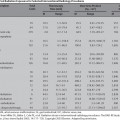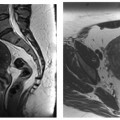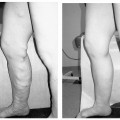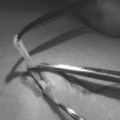23 Clinical Perspective: Spine Interventions (Interventional Neuroradiology) Gerald Wyse and Kieran Murphy Osteoporosis is a disease of increased skeletal fragility, low bone mineral density, and micro architectural deterioration.1 It is a common condition with a broad clinical spectrum ranging from asymptomatic patients to those presenting with a disabling hip fracture. An osteoporosis fracture can be the initial event leading to a clinical medical decline that may often end in disability or death.2 The morbidity and mortality from an osteoporotic fracture can be equal to that associated with a spontaneous subarachnoid hemorrhage, yet we seldom regard it as a lethal disease. Although the initial orthopedic management may be excellent, the majority of patients never have their underlying bone disease adequately investigated or treated. Medical treatment for osteoporosis, in the form of calcium supplementation, vitamin D, bisphosphates, and intravenous zoledronic acid has been shown to be effective.3,4 Vitamin D is essential for skeletal maintenance and absorption of calcium. Recent concerns of an increased risk of breast cancer and cardiovascular disease have caused some to move away from prescribing long-term estrogen treatment for their patients.5 Medications are a lifetime commitment and poor adherence is common.6 Lifestyle changes such as avoidance of smoking, excessive alcohol, and participation in weight-bearing exercise are known to help address the complications associated with osteoporosis, but are difficult to maintain. This is why there is a role for minimally invasive image-guided therapy to be used as both a primary or adjunctive treatment for such a devastating disease. These procedures can improve patient outcome and quality of life with minimal procedural complications. In the era of image-guided therapy, a complete reevaluation of the historic, outdated, mechanical approach to the biomechanics of spine and bone disease is required. An understanding of bone metabolism and the need for bone-like compliant materials that mimic the beautiful engineering of the native architecture is necessary. Taking the heart as an example, image-guided therapy has helped us move from invasive and often brutal coronary bypass surgery to a 2-day hospital stay and a 5 mm incision associated with angioplasty and stent placement. Presently, we are at the same stage of development for spine image-guided therapy that cardiology was at 20 years ago. Using a multidisciplinary approach, image-guided therapy for osteoporosis has enormous potential. Precise and accurate needle and device placement using image guidance and the importance of understanding the physics involved means that radiologists have a fundamental role to play in the treatment of osteoporosis. In the future, the development and innovation of these techniques will help the many women and men who suffer from osteoporosis. The number of people who suffer from osteoporosis is staggering. Think for a moment of the 400,000 patients with end-stage renal disease on dialysis in the United States7 who suffer from metabolic bone disease but have contraindications to bisphosphates. Similarly, there are 1.5 million dialysis patients worldwide with renal osteodystrophy due to one or a combination of secondary hyperparathyroidism, adynamic bone disease, and osteomalacia. There are 350,000 people on dialysis in the United States alone with secondary hyperparathyroidism. Patients with end-stage renal disease are not the only patients to be concerned about. In addition to the above, consider women who have had anorexia during childhood or early adult life that never achieved adequate bone density. Millions of Asian women have had osteomalacia or rickets from childhood depravation during times of civil war in Asia, Vietnam, or the Middle East. All of these people are at increased risk for skeletal fractures, especially of the vertebral bodies, hip, and wrist.8,9 Osteoporosis is therefore a global problem. Measurement of bone mineral density at the lumbar spine and proximal femur by dual energy absorptiometry is a reliable way to assess patients for osteoporosis.9,10
Osteoporosis: A Global Problem
![]()
Stay updated, free articles. Join our Telegram channel

Full access? Get Clinical Tree








